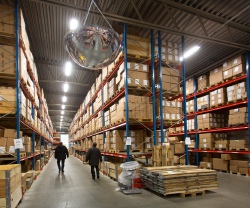Using light effectively

There are lots of ways to reduce the energy consumption of lighting systems. Peter Van Der Kolk of Helvar explains how by continually re-evaluating your system configuration and adjusting operating parameters — such as presence/absence detection, daylight harvesting thresholds, dimming levels and time-controlled scenes, you can optimise on-going energy savings and operational efficiency.
When it comes to lighting, there is a lot to consider in terms of ensuring operational efficiency and indeed, energy-saving benefits. By and large, most installations rely solely on the use of energy-efficient lamps; whilst this is an acceptable means to help improve efficiency and generate savings in the long run too, there are more controllable means by which these key points can be met.
First, it is important to think about how the building will be used over the course of the day. Between what hours will the building be used? Are all areas used at all times? Does the lighting need to run at ‘full’ capacity or are there areas in which a dimmed light would serve the needs just as well? From this point, appropriate lighting controls can be put into place, according to these needs.
Taking presence/absence detection as a starting point, there are of course instances where some parts of a building will be used far less frequently than others. Warehouses and stock rooms in a retail environment, for example, will be used less often than the main store. Similarly, staff rooms and breakout areas in offices tend to only be used at certain times of the day. To ensure lights are not needlessly left on, wasting energy and increasing the overall energy bill as a result, a presence/absence detection system that is in tune with the lighting system itself can really work wonders.
Allowing lights to turn on at a pre-determined level when movement is detected before automatically switching off again if no movement is sensed after a certain period of time can help generate significant energy and cost savings.
In a similar vein, time-controlled scenes can be incredibly useful too — allowing lighting in various parts of the building to be programmed to turn on at a pre-set level before turning back off again at set times of the day ensures lighting systems are never left on unnecessarily.

Owing to the nature of these controls, different scenes can also be set up to meet varying needs. Task lighting, for example, requires a high level of illumination to ensure that visual tasks can be completed easily; lighting can be controlled in line with this need whereby certain areas will be programmed to turn on at a certain percentage, according to the nature of the job in hand.
Overall illuminance levels should also be considered. A DALI control system can be programmed to increase or decrease lighting levels to correspond to available natural light. As such, a typical system may see illuminance levels needing to be set higher or lower at certain times of the day. During the morning and towards the end of the day, lighting levels may need to be increased, according to ambient lighting conditions.
Taking these points into consideration, there is a wide variety of lighting configurations that can be put into place to ensure a system that is in line with the needs of the building and its occupants. An astronomical clock, for example, is one way in which a fully automated system can operate. By installing daylight sensors, which can be linked to the luminaires to adjust levels, lighting can be dimmed or brightened depending on the levels of daylight. Where manual adjustments need to be made, this too is possible simply by selecting various levels on the colour control system’s colour wheel.
Total lighting-control systems can, on the face of it, seem complex; after all, lighting control is still considered an emerging methodology. With the guidance of a lighting-control specialist, engineers can be steered in terms of gaining a better understanding of the technology and how it can be utilised to create systems that are fully controllable.







